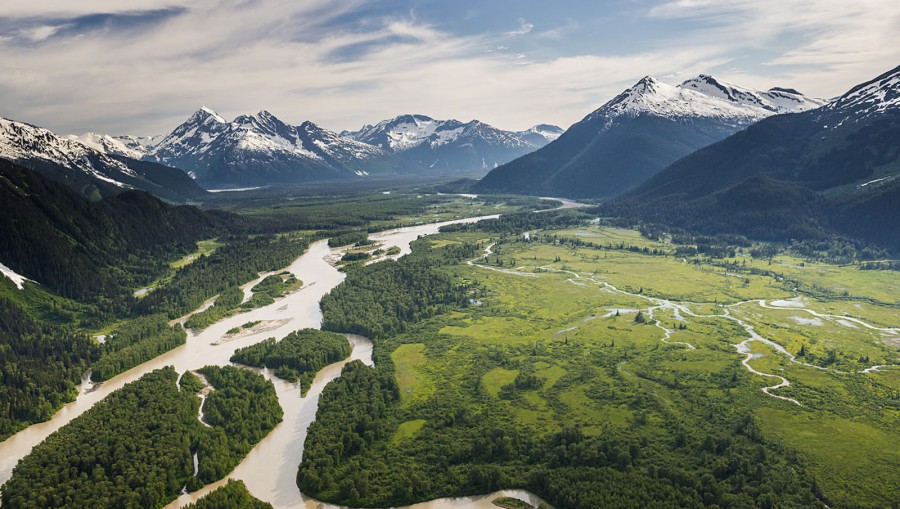The Taku is the largest totally intact watershed on the Pacific coast of North America. The 4.5 million acre river system sprawls across the northwest corner of British Columbia, its many tributaries converging to form the main stem of the Taku, which pours across Alaska’s border and becomes ocean just south of Juneau. It’s no coincidence that this spectacularly wild, virtually pristine international river system – linking interior boreal uplands, verdant temperate and rain forest valleys, and a rich marine estuary — is one of the continent’s premier salmon strongholds. The Taku is in fact southeast Alaska’s number one salmon producer. In a time of accelerating climate change and dwindling biodiversity, the ecological value of the Taku’s diverse and interconnected mountain-to-sea ecosystem, with all native flora and fauna in place and thriving, can hardly be overstated. Here is one of our planet’s premier biological refugias. Indigenous people on both sides of the border maintain profound cultural connections to the Taku and its bounty of fish and wildlife. To wilderness adventurers and paddlers, the Taku is a wild and storied destination. The watershed is, in short, an amazing conservation opportunity.
The Taku is an opportunity because it’s at a crossroads, with its fate yet to be determined. No vast expenditures for habitat restoration are needed here. All that’s required for the Taku is humility and foresight to keep the watershed as is. But mining has been proposed near the juncture of the Tulsequah River and the main stem Taku, on the Canadian side very close to the Alaska border. The extremely controversial…



